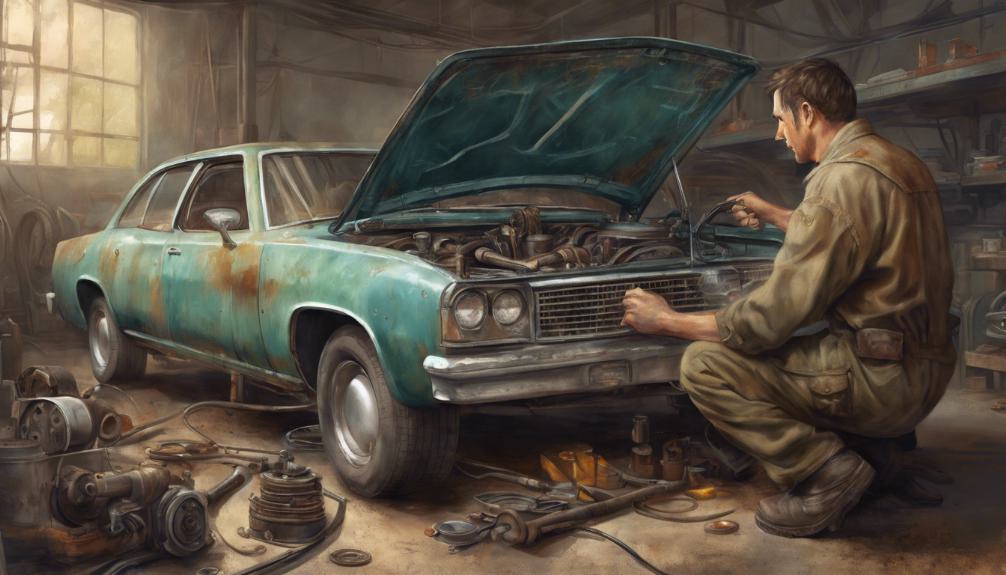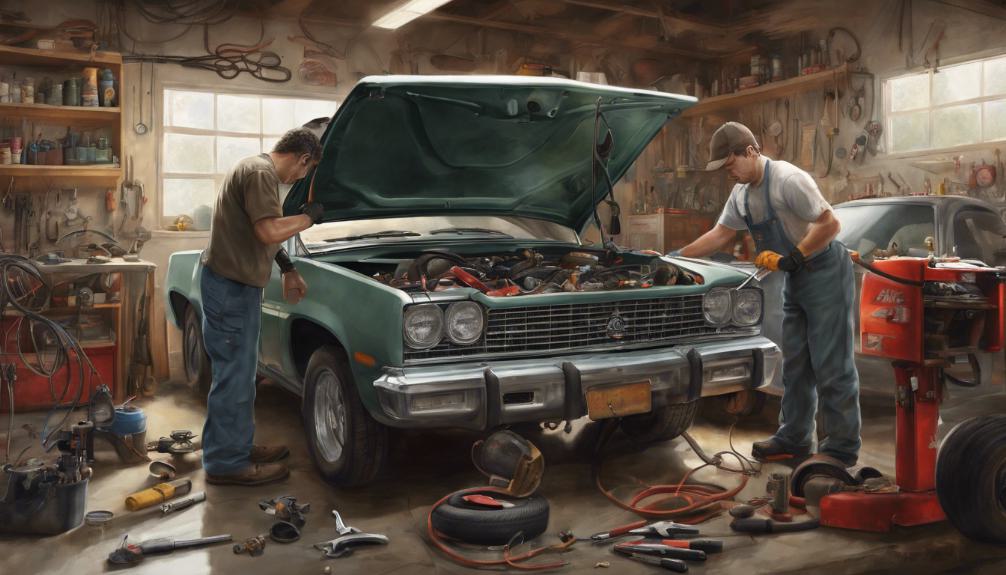If you notice leaks, difficulty steering, or unusual noises while driving, it’s time to think about a power steering line replacement for best steering functionality and safety.
Mileage, driving conditions, and maintenance practices influence timing, with manufacturers often recommending replacement every 50,000 to 100,000 miles.
Professional inspections every 50,000-100,000 miles help identify wear and safety risks. Think about DIY for simple jobs, but professional replacement ensures correct procedures by experts.
Reflect on cost-effectiveness for DIY, but for complex issues, seek help. Replacement is important for safe driving and preventing costly repairs. Learn more about timing, signs, and maintenance factors above.
What You Need to Know
- Replace damaged power steering lines promptly to ensure safety and steering functionality.
- Signs like leaks, difficulty steering, or unusual noise indicate the need for replacement.
- Manufacturers recommend replacement every 50,000 to 100,000 miles.
- Professional inspection every 50,000-100,000 miles can identify potential safety risks.
- DIY for cost-effectiveness, but professional replacement ensures correct job by experts.
Signs of Power Steering Line Issues

If you notice leaks, difficulty steering, or unusual noise while driving, these could be signs of power steering line issues.
Low power steering fluid levels could indicate a problem with the power steering lines.
When checking under the hood, oily substances in the engine bay might suggest leaks in the power steering lines. Another symptom to watch for is increased steering effort or a choppy feel when turning the wheel.
These issues can impact your ability to steer properly and may even pose a safety risk.
It’s crucial to address power steering line problems promptly to guarantee your vehicle’s steering system functions correctly. If left unchecked, these issues could worsen and lead to a loss of steering control.
Regularly inspecting your power steering system for leaks, low fluid levels, and unusual noises can help you catch problems early on and prevent more significant issues down the road.
Importance of Prompt Replacement
Replacing damaged power steering lines promptly is essential to maintaining safe and efficient steering in your vehicle.
When power steering lines are compromised, safety hazards can arise, affecting your ability to control the vehicle properly.
Timely replacement not only prevents accidents but also guarantees that your steering functionality remains intact.
By addressing the issue promptly, you can extend the lifespan of your power steering system, avoiding further damage that may result in costly repairs down the line.
Quick replacement isn’t only safer but also more cost-effective in the long run, as it helps you avoid more extensive damage that could occur if the issue is left unattended.
Therefore, to maintain top safety and steering performance in your vehicle, it’s imperative to prioritize the timely replacement of damaged power steering lines.
Factors Influencing Replacement Timing

After recognizing the significance of prompt power steering line replacement, understanding the factors influencing the timing of replacement becomes essential in maintaining your vehicle’s steering performance and safety.
The replacement timing of power steering lines is often influenced by various factors such as mileage, driving conditions, and maintenance practices.
Vehicle manufacturers typically recommend replacing power steering lines every 50,000 to 100,000 miles to guarantee peak performance.
Signs of wear, including leaks, difficulty steering, or unusual noise, indicate the immediate need for replacement.
Regular inspections play a vital role in identifying these issues early on, preventing potential accidents or system failures.
By adhering to proper maintenance schedules and promptly replacing damaged power steering lines, you can safeguard the steering functionality of your vehicle and prolong the lifespan of the steering system.
Staying vigilant and addressing any signs of wear promptly can help avoid more significant problems down the road.
Professional Inspection Recommendations
Wondering when to schedule your professional inspection for power steering lines?
It’s recommended to have a professional inspection conducted every 50,000-100,000 miles to guarantee the safety and functionality of your power steering system.
During these inspections, mechanics can thoroughly assess the condition of the power steering lines, looking for signs of wear and potential safety risks.
Based on their assessment, they can recommend whether a replacement is necessary to maintain peak steering functionality and prevent potential accidents.
Seeking expert guidance is essential in evaluating the risks associated with not replacing damaged power steering lines.
Then, professionals can provide valuable advice on the proper replacement procedures to follow, ensuring that the new lines are installed correctly to ensure both safety and efficiency.
Regular inspections by professionals play a critical role in preventing accidents and maintaining the overall health of your vehicle’s steering system.
What are the Signs that Indicate a Need for Power Steering Line Replacement?
When your power steering line starts leaking or becomes loose, it’s time to consider a replacement. Look for signs like difficulty turning the steering wheel, low power steering fluid, or strange noises when turning. Regularly checking the track bar function and replacement can prevent more costly issues down the line.
DIY Vs. Professional Replacement Considerations

Considering the complexity and potential risks involved in power steering line replacements, weighing the decision between DIY and professional replacement is crucial for guaranteeing the safety and functionality of your vehicle.
DIY power steering hose replacement can be cost-effective as it saves on labor costs, but it requires the proper tools and skills for effective line replacement.
On the other hand, opting for professional replacement ensures that the job is done correctly by experts with the necessary knowledge and experience.
Also, professional replacement may come with warranties for both parts and labor, providing you with added protection in case of any issues post-replacement.
It’s advisable to contemplate DIY for simple line replacements where you have the required expertise, but for more complex issues or if you’re unsure about the process, seeking professional help is recommended to avoid any potential complications and ensure the longevity of your power steering system.
Cost Analysis for Power Steering Line Replacement
In order to determine the cost of a power steering line replacement, it’s important to take into account factors such as labor hours and parts pricing.
When considering the cost analysis for a power steering line replacement, labor costs play a significant role.
Dealerships may charge around $800 for this service, which includes approximately 5 hours of labor.
However, opting for a do-it-yourself (DIY) approach can potentially save you money, especially if you’re comfortable working on your vehicle without the need to drop the back cradle.
Using genuine parts recommended by the manufacturer is essential for best performance and longevity of the power steering system.
Before proceeding with the replacement, identifying the source of the leak is vital to make sure that the issue is correctly addressed.
As an Amazon Associate we earn from qualifying purchases.










